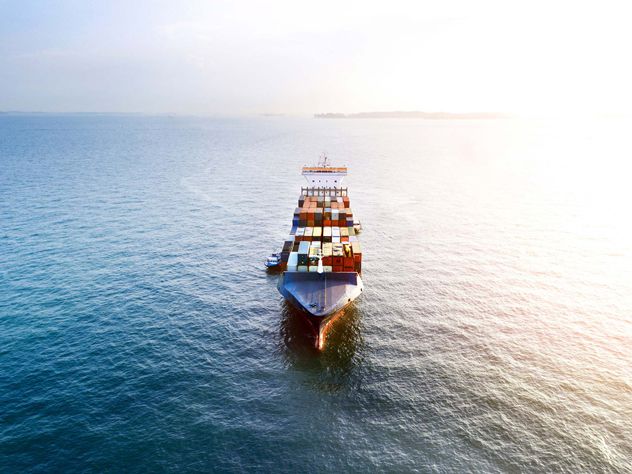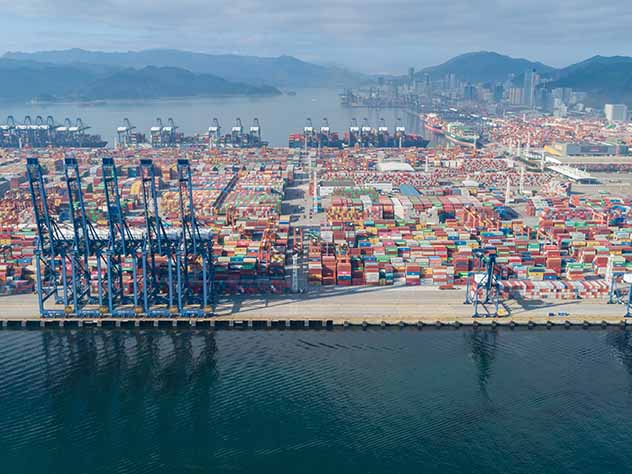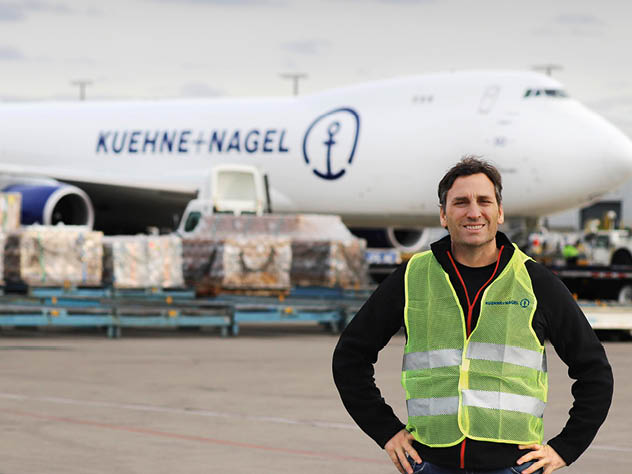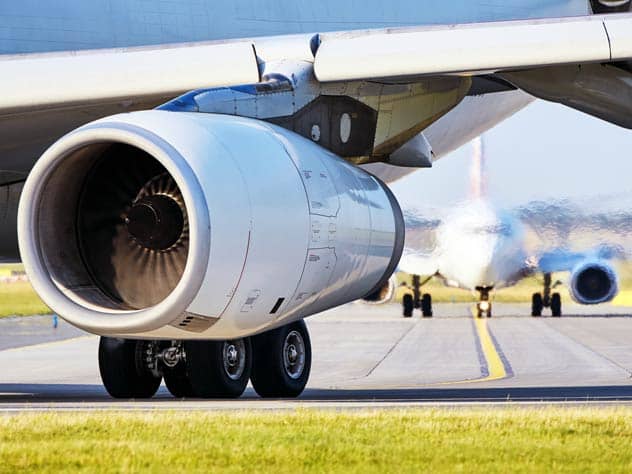At Kuehne+Nagel, sustainability in shipping is a topic we take very seriously. Although container shipping is already the most environmental friendly method of transporting goods globally, the complete decarbonisation of the logistics industry is still 10 to 15 years away. Until new climate-friendly fuels or propulsion systems become available on a larger scale, our innovative approach to sustainability in shipping enables you to already opt for more environmentally aware transport options.
Understanding your carbon footprint
Recent developments in big data and predictive analysis enable us to measure and accurately offset our carbon emissions. This allows us to offer you full visibility of your shipping-related emissions through our seaexplorer and Global Sea Freight Carbon Calculator platforms, so that you can choose the eco-friendliest services.
In order to reduce carbon emissions, we are offering a sustainable biofuel solution in close cooperation with carriers. We are also working closely with the Global Maritime Forum’s Getting to Zero Coalition to accelerate the development of zero-emission ships by 2030.
Sustainable logistics: Carbon-neutral sea freight solutions
We currently offer two completely climate-neutral sea freight solutions – KN LCL and KN Pledge. We offset the entire carbon footprint of both these services by contributing to environmental projects. We work with nature-based projects around the world that help to reduce greenhouse gas emissions, while also preserving biodiversity and improving the livelihoods of local communities. We have partnered with various NGOs to create this viable path towards carbon neutrality. These projects are based on the UN’s Sustainable Development Goals (also known as SDG goals) and are verified by independent organisations with the highest internationally recognised standards. By supporting these projects, we generate carbon credits which can compensate the CO2-emissions of a shipment.

Leadership in green logistics
We are working closely with all carriers to promote sustainability shipping. To achieve this, we have created ‘green lanes’ which give priority access to vessels that have lower emissions. We are also undertaking other initiatives, which include:
- Reducing the movement of empty containers
- Identifying shipments which can be switched from truck to ship (barge) transportation
- Using containers with sustainable floors (such as bamboo)
- Preventing the transportation of undeclared hazardous goods, or the shipment of illegal toxic waste
Learn more about our Net Zero Carbon initiative and about offsetting and the nature-based projects that we invest in.
These customers are already proud to carry out CO2-neutral transports with us.
Learn more in our FAQs on CO2 neutrality and offsetting below.
Questions and answers on CO2 neutrality at Kuehne+Nagel

 How are, for example, the CO2 emission for Seafreight transport calculated?
How are, for example, the CO2 emission for Seafreight transport calculated?
Currently, we make use of the data provided by the seaexplorer and the Carbon Calculator, which is based on the accounting standards of the Clean Cargo (CC).
Going forward, we will make use of an advanced approach using Vessel Master Data. The emissions of ships are currently being reported on an aggregated level, e.g. on a trade lane level, by different bodies (e.g. CCWG). Our Logindex implements a data based model to approximate the CO2 emissions on vessel level based on vessel properties (engine efficiency, capacity). Emissions are reported on an emission / distance / TEU basis.
Basis and Methodology Vessel Emission Score
The emission value for each vessel is calculated with an adapted version of the Energy Efficiency Design Index EEDI by IMO. The model estimates the fuel consumption of the ship’s main engines and assumes all the fuel consumed is converted into CO2. For the estimation of the fuel consumption, the model relies on data from providers such as Clarksons for the engine power, specific fuel consumption (how much fuel is required for unit of power), the vessel design, speed and nominal capacity. For a CO2 emission per container level, the model assumes capacity utilisation common for all vessels. The emission is reported on a per km basis, thus multiplying this number with distance travelled for a ship will result in an estimation of CO2 emitted on a specific route per TEU.

 How does offsetting exactly work?
How does offsetting exactly work?
Still, CO2 emissions of shipments cannot be 100% avoided. Until they can be technologically reduced to zero they can be offset via us by investing in nature-based projects around the world that help reduce greenhouse gas emissions. CO2 credits are generated to prove that a certain amount of CO2 emissions has been offset and that the shipment has been CO2 neutralised. We have started our own nature projects in Myanmar and New Zealand and we buy credits from a global portfolio of environmental projects, including Cordillera Azul National Park Project in Peru and the Katingan Peatland Restoration and Conservation Project in Indonesia. Each carbon credit is subject to a third-party verification process and represents the avoidance or removal of one tonne of CO2.

 What projects does Kuehne+Nagel invest in to offset my supply chain?
What projects does Kuehne+Nagel invest in to offset my supply chain?
We partnered up with various NGO's and developers in order to support our customers to create their own carbon neutrality path. We work with nature-based projects around the world that help reduce greenhouse gas emissions while improving the livelihoods of local communities and preserving biodiversity and wildlife. These projects – verified by independent organisations with the highest internationally recognised standards and based on the UN Sustainable Development Goals (SDGs) – generate carbon credits which can be used to compensate for the emissions of a shipment.

 Isn’t offsetting comparable to selling of indulgences?
Isn’t offsetting comparable to selling of indulgences?
Certainly, avoiding CO2 is better than offsetting it. However, CO2 offsetting is definitely not a sale of indulgences. It enables the offsetting of emissions which are difficult to avoid, leading to more climate protection overall.

 What is the role of afforestation for saving CO2 emissions?
What is the role of afforestation for saving CO2 emissions?
One hectare of forest filters up to 50 tonnes of soot and dust from the air, generates around 100,000 cubic metres of new groundwater, releases 15-30 tonnes of oxygen per year, and binds to 10.6 tonnes of CO2. But it is not enough to stop this reservoir from being plundered in order to limit the rise in our atmosphere‘s temperature.
This living CO2 reservoir must be protected and afforested as nature has the potential to provide more than one third of the climate solution by 2030. Nature based solutions comprise all activities related to the protection, or redevelopment, of natural ecosystems such as forests, grasslands, and wetland systems to lower concentration of CO2 in the atmosphere. Each of these activities results in the biological capture and storage of CO2 - typically through the process of photosysthesis. We commit to supporting this effort through our offsetting programmes.
[Source: American Association for the Advancement of Science; The Nature Conservancy]
Para mais informações sobre a neutralidade de CO2, consulte as nossas Perguntas Frequentes







